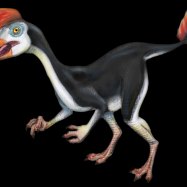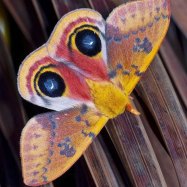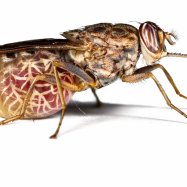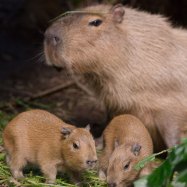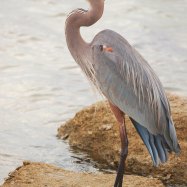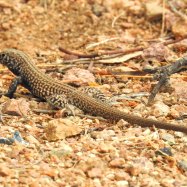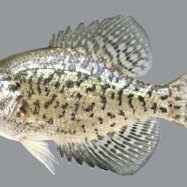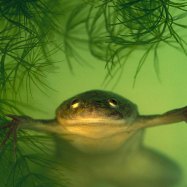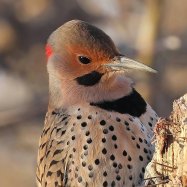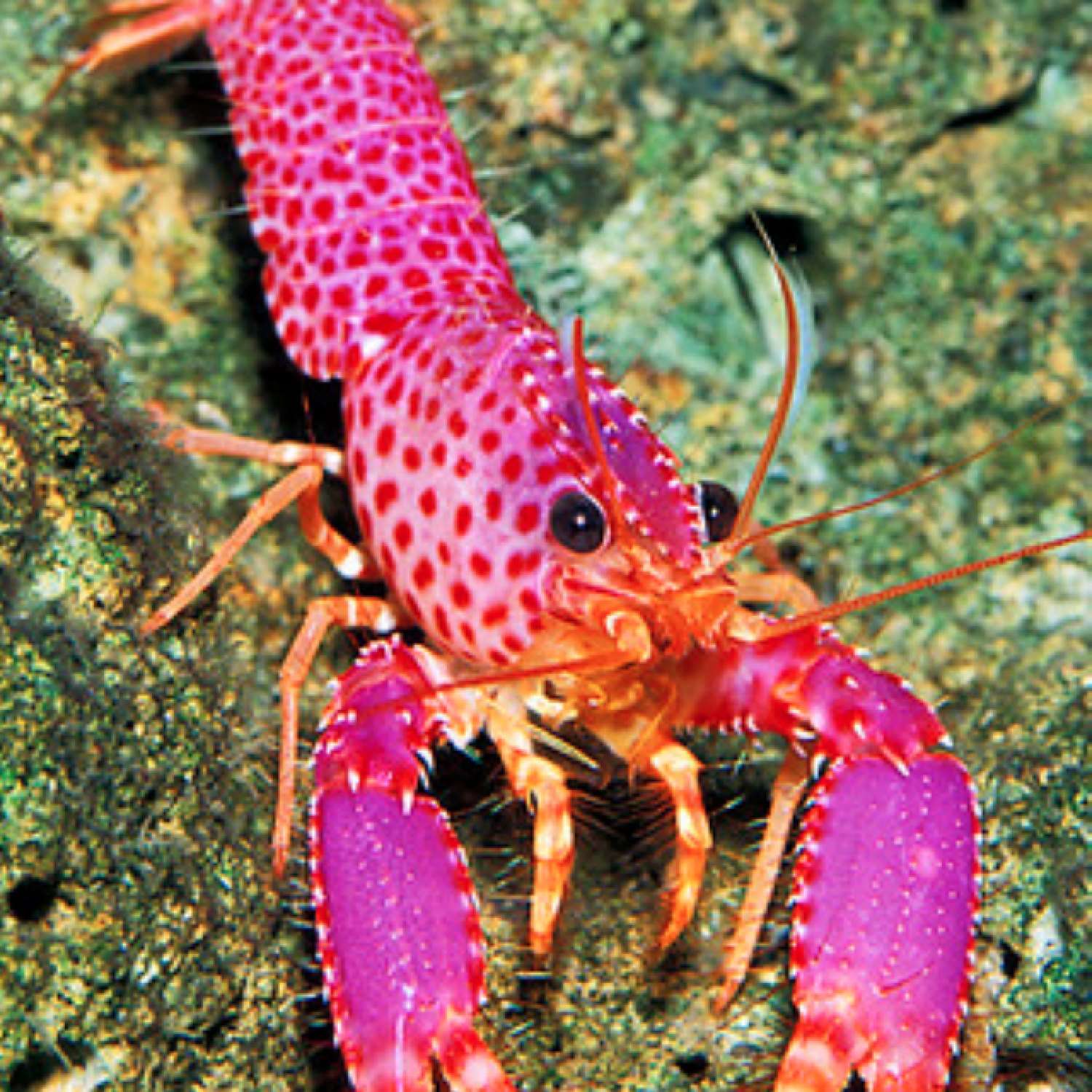
Lobster
Up to 25 inches
Did you know that lobsters belong to the Nephropidae family and can grow up to 25 inches long? With a long, segmented body and a large, muscular tail, these creatures can be found in coastal areas all over the world. Keep an eye out for these fascinating animals on your next beach trip! #lobster #coastalcreatures #marinewonders
Animal Details Summary:
Common Name: American Lobster
Kingdom: Animalia
Habitat: Saltwater
The Fascinating World of the American Lobster
The deep blue waters of the Atlantic Ocean hold many mysteries and wonders, but none captivate us more than the majestic American lobster, scientifically known as Homarus americanus. This large and impressive crustacean has fascinated us for centuries, with its unique appearance and behavior. In this article, we will delve into the world of the American lobster, exploring its habitat, feeding habits, and other interesting facts.A Royal Place in the Animal Kingdom
Before we dive into the specifics of the American lobster, let's take a step back and look at its place in the animal kingdom Lobster. The American lobster belongs to the Kingdom Animalia, which means it is a multicellular organism that is capable of movement. It also falls under the phylum Arthropoda, making it an invertebrate with a segmented body and jointed legs.Within the Arthropoda phylum, the American lobster belongs to the class Malacostraca, which comprises over 40,000 species, including crabs, shrimp, and crayfish. This class is known for its diverse range of habitats, spanning from freshwater to the deep sea. The American lobster further falls under the order Decapoda, meaning it has ten legs, and the family Nephropidae, which includes over 60 different species of lobsters.
A Saltwater Creature with an Appetite for Meat
The American lobster is a fascinating creature that thrives in the salty waters of the Atlantic Ocean. It can be spotted in the coastal areas of the United States, where it is commonly found. This lobster is not a picky eater; it is a carnivore, meaning it feeds on other animals for sustenance.Feeding behaviors vary among different species of lobsters, with some being scavengers and others actively hunting for prey Long Eared Owl. The American lobster falls into the latter category, using its powerful claws to catch and crush its prey, which generally includes fish, mollusks, and other crustaceans. Its diet is also heavily dependent on its size, with larger lobsters feeding on larger prey.
A Habitat Fit for a King
While the American lobster can be found in a variety of habitats within the Atlantic Ocean, they have very specific and unique requirements for their ideal living space. As mentioned earlier, this lobster is commonly found in coastal areas, but it thrives in areas with a rocky bottom, as it provides plenty of hiding spots for them. They are also known to inhabit crevices and caves, giving them protection from predators.In addition to providing shelter, the rocky bottom also plays a crucial role in their diet. The American lobster can be quite lazy when it comes to feeding and would often prefer to sit and wait for food to come to them. The cracks and crevices in the rocks provide the perfect place for them to hide and wait for their prey to come close enough to be caught.
An Oceanic Conqueror with a Blue-Green Suit
One cannot talk about the American lobster without mentioning its striking appearance. While we often associate lobsters with a bright red color, the American lobster's natural coloration is actually blue-green to brownish-green. This coloration serves as camouflage, helping them blend in with their surroundings and making them less visible to predators.While their color often gives away their location, especially during feeding, the American lobster has a fascinating ability to change its color. When in stressful situations or when molting, they can change their color to a deeper red, making them look more intimidating to potential predators.
A Body Like No Other
The American lobster is arguably one of the most interesting-looking creatures in the animal kingdom. Its body is made up of several segments, with a long tail that is divided into five distinctive segments. The first of these segments is the abdomen, which is used for swimming. The next two segments are the pleon and the telson, which make up the muscular tail and are used for moving the lobster backward.The last two segments are the uropods and the pleopods, which act as stabilizers and controls for the tail. In addition to these, the American lobster also has a pair of large claws that can grow up to one-third of their total body length. These claws are used for hunting and self-defense, and they are also the reason why lobsters are commonly associated with delicious seafood dishes.
Size Matters
When it comes to the size of the American lobster, the age-old phrase "size matters" does hold true. These crustaceans can grow to impressive sizes, with the largest recorded being over 25 inches in length. The size of the lobster is directly proportional to its age, with older lobsters being larger in size.On average, male lobsters are larger and heavier than females, with their claws being more muscular and robust. The size of the American lobster also plays a vital role in determining its social status. In areas with high lobster populations, larger males are often seen as dominant and will have access to the best food and shelter.
A National Treasure of the United States
While the American lobster can be found in many parts of the world, its origins lie in the United States, making it an essential part of the country's culture and economy. The main distribution of this lobster species is in the coastal waters of the United States, particularly in the New England region. It is also the state crustacean of Maine and has become an emblem of the state's seafood industry.American lobsters are also highly sought after in the seafood market, both domestically and internationally. They are considered a luxury item and are often served in high-end restaurants around the world. The US is the world's leading exporter of lobster, with Canada being the closest competitor.
A Truly Unique Creature
In conclusion, the American lobster is a truly unique creature, both in appearance and behavior. It holds a special place in the animal kingdom, with its fascinating adaptations and impressive size. From its carnivorous feeding habits to its ability to change color, this crustacean is a natural wonder that continues to captivate and amaze us. So the next time you are enjoying a delicious lobster dish, take a moment to appreciate the remarkable animal that it came from.

Lobster
Animal Details Lobster - Scientific Name: Homarus americanus
- Category: Animals L
- Scientific Name: Homarus americanus
- Common Name: American Lobster
- Kingdom: Animalia
- Phylum: Arthropoda
- Class: Malacostraca
- Order: Decapoda
- Family: Nephropidae
- Habitat: Saltwater
- Feeding Method: Carnivore
- Geographical Distribution: Atlantic Ocean
- Country of Origin: United States
- Location: Coastal areas
- Animal Coloration: Blue-green to brownish-green
- Body Shape: Long, segmented body with a large, muscular tail
- Length: Up to 25 inches
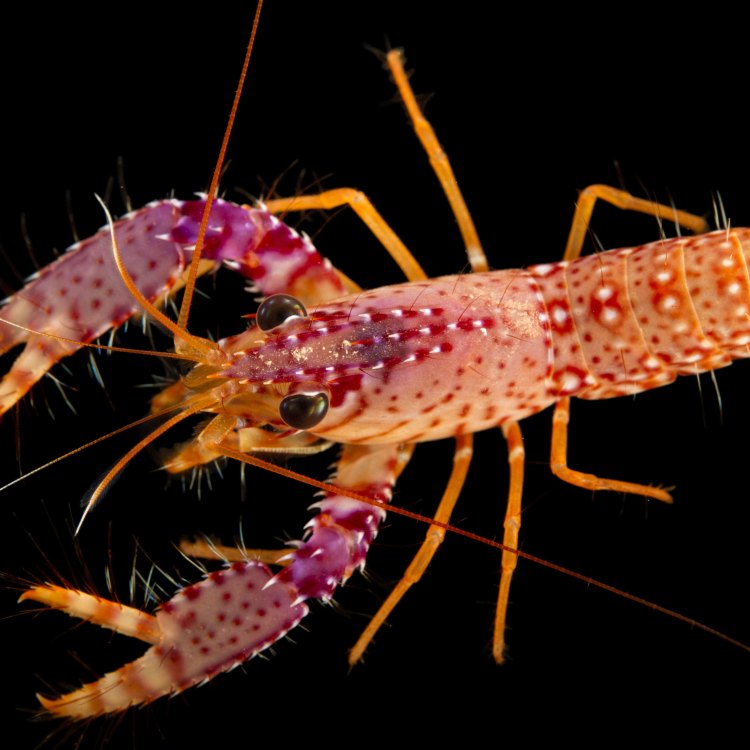
American Lobster
- Adult Size: 1-5 pounds
- Average Lifespan: 20-30 years
- Reproduction: Sexual
- Reproductive Behavior: Mating typically occurs in summer and fall
- Sound or Call: No
- Migration Pattern: Yes
- Social Groups: Solitary
- Behavior: Nocturnal, secretive, and territorial
- Threats: Overfishing, habitat destruction, pollution
- Conservation Status: Not assessed
- Impact on Ecosystem: Important ecological role as a predator and scavenger
- Human Use: Commercial fishing, culinary delicacy
- Distinctive Features: Large claws, exoskeleton
- Interesting Facts: Lobsters are able to regenerate lost claws
- Predator: Predatory fish, eels, octopuses
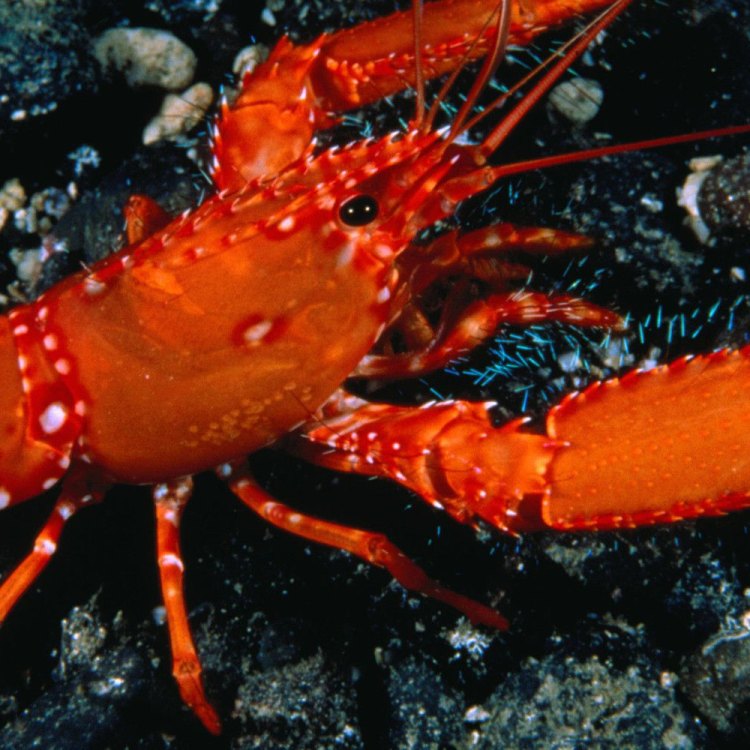
Homarus americanus
The Fascinating World of Lobsters: From Solitary Creatures to Culinary Delicacies
Lobsters have long been a symbol of luxury and indulgence, often gracing the menus of high-end restaurants and attracting high prices. Yet, beyond their status as a culinary delicacy, there is much more to these crustaceans than meets the eye. From their impressive size and long lifespans to their unique reproductive behavior and role in the ecosystem, lobsters are truly fascinating creatures. In this article, we will delve deep into the world of lobsters and uncover their distinctive features, behavior, and impact on the ecosystem PeaceOfAnimals.Com.Adult Size and Average Lifespan
One of the most distinguishing features of lobsters is their large size, ranging from 1-5 pounds on average. However, there have been records of lobsters weighing over 40 pounds, making them one of the largest arthropod species in the world. But their impressive size is not the only remarkable thing about them. Lobsters also have a relatively long lifespan, with an average of 20-30 years, although some have been known to live up to 100 years.
Reproductive Behavior and Mating Patterns
Like most marine animals, lobsters reproduce sexually. However, their reproductive behavior is quite unique. Mating typically occurs in the summer and fall, when female lobsters release their pheromones to attract male lobsters. The males then use their antennules, which are smaller and more sensitive than their antennae, to sense and locate the female. They then use their large claws to hold onto the female during mating, and the female carries the fertilized eggs for several months until they hatch into mini lobster larvae Lemon Cuckoo Bumblebee.
Sound or Call: No
Lobsters do not have vocal cords and therefore cannot produce sounds or calls like other marine animals such as whales and dolphins. However, they communicate with each other using a combination of visual and chemical cues. They have small antennules that are covered in tiny sensory hairs, which they use to sense their environment and communicate with other lobsters.
Migration Pattern and Social Groups
Unlike other marine animals, lobsters have a solitary lifestyle. They do not form social groups or live in colonies, and they prefer to stay in their own territory. However, they do participate in seasonal migrations. During the winter, when the waters are colder and less favorable for breeding, the lobsters will move to deeper waters, returning to shallower waters in the spring to find mates and reproduce.
Behavior and Distinctive Features
Lobsters are primarily nocturnal, meaning they are most active at night. They also have a secretive nature, spending most of their time hidden in crevices or burrows on the ocean floor. This behavior not only helps them avoid predators but also allows them to conserve energy.
One of the most distinctive features of lobsters is their large, powerful claws. These claws are used for both defense and capturing prey. They have a hard, protective exoskeleton, which is composed of chitin, a tough and elastic material found in the outer skeletons of other arthropods. Lobsters undergo molting, shedding their old exoskeleton and growing a new one to accommodate their increasing size.
Impact on the Ecosystem
While lobsters may seem like solitary creatures, they actually play an important role in the ecosystem. They are both predators and scavengers, feeding on various marine organisms such as clams, crabs, and snails. This helps to control the population of these organisms and maintain balance in the ocean's ecosystem. Additionally, when lobsters molt, they release nutrients back into the ecosystem, providing a source of food for other marine animals.
Threats and Conservation Status
Unfortunately, lobsters are facing numerous threats, primarily from human activities. Overfishing is a significant issue, with lobsters being a popular commercial fishing species. This has led to declines in their populations in some areas. Habitat destruction, such as the destruction of coral reefs, also poses a threat to lobsters, as they rely on these structures for shelter. Pollution, particularly from oil spills and chemical contaminants, can also negatively impact lobster populations.
While there is no official assessment of their conservation status, it is essential to monitor and manage lobster populations to ensure their continued survival. Many fisheries have implemented regulations and restrictions to control lobster fishing and prevent overfishing. Additionally, efforts to reduce pollution and protect coral reefs can also benefit lobster populations.
Human Use and Interesting Facts
Lobsters have been commercially fished for centuries, and they remain a significant source of income for many coastal communities. The majority of lobsters are caught using lobster traps, where they enter the trap to feed on bait and are then unable to escape. However, there are also concerns about the humaneness of this method, as lobsters can suffer injuries and stress during trapping and handling.
Aside from their commercial use, lobsters have also captured the interest of scientists and researchers due to their ability to regenerate lost claws. This remarkable ability means that lobsters can regrow a claw if it gets damaged or lost in a fight with a predator. However, this process can take several years, and the regenerated claw may not be as strong as the original one.
Predators and Conclusion
As mostly solitary creatures, lobsters do not have many natural predators. However, they can fall prey to predatory fish, such as cod and flounder, as well as eels and octopuses. Additionally, lobsters are also caught and consumed by humans, contributing to their declining populations in some areas.
In conclusion, lobsters may seem like simple creatures, but they have many unique features and behaviors that make them truly fascinating. From their impressive size and long lifespan to their solitary and nocturnal lifestyle, lobsters are well-adapted to their marine habitat. While human activities pose a threat to their survival, efforts to conserve and manage lobster populations can help ensure their continued existence and maintain balance in the ocean's ecosystem. So, the next time you indulge in a delicious lobster dish, remember the impressive journey and role these creatures play in the fascinating world of the ocean.

The Fascinating World of the American Lobster
Disclaimer: The content provided is for informational purposes only. We cannot guarantee the accuracy of the information on this page 100%. All information provided here may change without prior notice.

